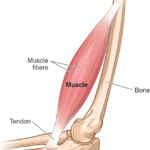In the fast-paced world of product development, rapid prototyping is a critical step that can significantly influence the success of a project. Rapid prototyping allows designers and engineers to quickly create physical models of their designs, facilitating testing, validation, and refinement before full-scale production. As technology advances, two main methods have emerged for rapid prototyping: CNC (Computer Numerical Control) machining and 3D printing. Each has its unique strengths and weaknesses, and choosing between them is crucial depending on the specific requirements of a project.
CNC service vs 3D printing are often compared due to their capabilities in creating detailed prototypes. However, understanding these two methods’ differences can help make an informed decision about which one to use. This article discusses why CNC service might be a better choice for rapid prototyping than 3D printing, highlighting both technologies’ key features, advantages, and disadvantages.
What is Rapid Prototyping?
Rapid prototyping refers to techniques used to quickly fabricate a scale model of a physical part or assembly using three-dimensional computer-aided design (CAD) data. The primary goal of rapid prototyping is to visualize and test the design, helping identify potential issues and make necessary adjustments before committing to mass production. This process is integral to product development, allowing for iterative testing and refinement.
Rapid prototyping accelerates product development, enabling designers and engineers to detect and rectify flaws early in the design phase. This proactive approach saves time and resources by preventing costly modifications during later stages of production. Moreover, rapid prototyping fosters innovation by allowing for multiple iterations and design variations, which can be tested and evaluated before finalizing the product design.
There are several methods of rapid prototyping, including additive manufacturing (3D printing), subtractive manufacturing (CNC machining), and other hybrid techniques. Each method has its unique approach to creating prototypes. While additive manufacturing builds objects layer by layer from various materials, subtractive manufacturing involves removing material from a solid block to achieve the desired shape. These methods can be employed depending on the specific needs of the project, such as the complexity of the design, the materials used, and the required precision.
CNC Service
CNC (Computer Numerical Control) machining is a subtractive manufacturing process in which material is removed from a solid block (known as a blank or workpiece) to create a part or prototype. CNC machines are operated by computer programs that control the movement of cutting tools along various axes to achieve the desired shape and dimensions. This high-precision process is widely used in aerospace, automotive, and medical device manufacturing industries, where accuracy and material properties are critical.
CNC service involves several machines, including mills, lathes, and routers, each designed for specific tasks. Milling machines, for example, use rotating cutting tools to remove material, while lathes rotate the workpiece against a stationary cutting tool. On the other hand, Routers are often used for cutting and engraving on materials like wood, plastic, and certain metals.
One significant advantage of CNC machining is its ability to work with a wide range of materials, including metals, plastics, composites, and ceramics. This versatility makes CNC service suitable for creating durable and functional prototypes that closely mimic the final product. Additionally, CNC machining offers excellent surface finishes and tight tolerances, essential for parts requiring high precision and smooth surfaces.
Another benefit of CNC service is scalability. Once a prototype is approved, CNC programs can produce small or large production runs, ensuring consistency and quality across all parts. This capability makes CNC machining an attractive option for companies looking to transition from prototyping to production without significant changes to the manufacturing process.
CNC Service vs 3D Printing Contrast
When it comes to rapid prototyping, both CNC service and 3D printing have their place. However, choosing between the two depends on various factors, such as the type of material, desired precision, surface finish, and the complexity of the design.
Features
CNC Service Features
- Precision: CNC machines offer high precision and can produce parts with tight tolerances, which is essential for prototypes requiring exact dimensions.
- Material Versatility: CNC machining can work with a wide range of materials, including metals, plastics, and composites, making it suitable for creating durable prototypes.
- Surface Finish: CNC machining provides excellent surface finishes, reducing the need for post-processing.
- Scalability: CNC service can be easily scaled for small or large production runs, making it flexible for various project sizes.
3D Printing Features
- Complex Geometries: 3D printing excels in creating complex and intricate geometries that would be difficult or impossible to achieve with traditional manufacturing methods.
- Material Efficiency: Additive manufacturing uses only the material needed to create the part, which can be more efficient and reduce waste.
- Customization: 3D printing allows for easy customization of parts, making it ideal for creating unique prototypes.
- Speed: In some cases, 3D printing can produce prototypes faster, especially for small and intricate parts.
Pros
CNC Service Pros
- Durability: Prototypes created with CNC machining are often more durable due to robust materials.
- Accuracy: CNC machines can achieve high levels of accuracy, which is crucial for prototypes that need to meet specific tolerances.
- Finish Quality: The surface finish of CNC machined parts is superior, often requiring little to no additional finishing.
- Material Range: CNC machining supports various materials, including metals, essential for certain prototypes.
3D Printing Pros
- Design Flexibility: 3D printing allows for creating complex shapes and internal structures that would be challenging for CNC machining.
- Reduced Waste: Additive manufacturing only uses the material needed, leading to less waste than subtractive methods.
- Quick Iterations: Prototypes can be quickly modified and reprinted, facilitating rapid design iterations.
- Lower Initial Costs: 3D printing can have lower initial setup costs, making it accessible for smaller projects and startups.
Cons
CNC Service Cons
- Material Waste: Subtractive manufacturing processes like CNC machining can produce significant material waste.
- Cost: The initial setup and operation costs for CNC machining can be higher, especially for complex parts.
- Complexity Limitations: CNC machining may struggle with extremely complex geometries or internal structures compared to 3D printing.
- Lead Time: Due to setup and programming requirements, CNC machining can have longer lead times.
3D Printing Cons
- Strength and Durability: 3D-printed parts may not be as strong or durable as those made with CNC machining, especially when using certain materials.
- Surface Finish: The surface finish of 3D printed parts often requires additional post-processing to meet quality standards.
- Material Limitations: While 3D printing materials are continually advancing, they may not match the range and properties of materials available for CNC machining.
- Accuracy: 3D printing may not achieve the same level of accuracy and tolerance as CNC machining, which can limit precise prototypes.
Contrast Table
| Feature | CNC Service | 3D Printing |
| Precision | High precision and tight tolerances | Good, but it may vary with complexity |
| Material Versatility | Wide range, including metals and plastics. | Limited, though expanding. |
| Surface Finish | Excellent, often requires no finishing | Often requires post-processing |
| Complex Geometries | Limited by machining capabilities | Excels in complex designs |
| Material Efficiency | More waste due to subtractive process | Minimal waste, additive process |
| Scalability | Easily scalable for various production sizes | Suitable for small batches and prototypes |
| Durability | High durability with robust materials | Variable depends on the material |
| Customization | Customization requires reprogramming | Easy customization |
| Initial Costs | Higher setup and operation costs | Lower initial setup costs |
| Speed | Longer lead times for complex setups | Faster for small, intricate parts |
Conclusion
In conclusion, the choice between CNC service and 3D printing for rapid prototyping depends on your project’s specific requirements. CNC service excels in producing high-precision, durable parts with excellent surface finishes, making it ideal for prototypes that need to meet stringent tolerances and material properties. On the other hand, 3D printing offers unparalleled design flexibility, material efficiency, and faster iterations, which can be advantageous for creating complex geometries and unique prototypes.
Understanding the strengths and limitations of each method can help you make an informed decision that aligns with your project’s goals. While 3D printing continues to advance and expand its capabilities, CNC machining remains a reliable choice for many industries, particularly when precision and material robustness are paramount.


